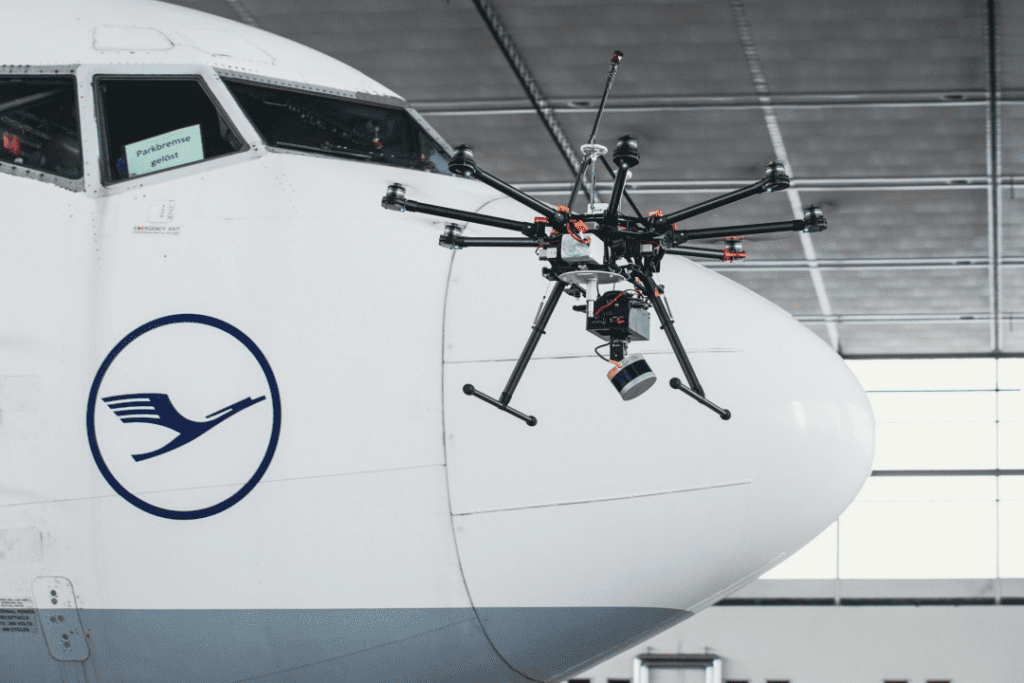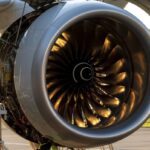
The use of drones in aircraft inspection and maintenance represents a transformative shift in the aviation industry, enhancing safety, efficiency, and cost-effectiveness. As traditional inspection methods often involve time-consuming and hazardous procedures, the integration of drone technology has revolutionized how inspections are conducted, allowing for rapid, thorough assessments of aircraft structures and components.
This innovation has become particularly significant in the context of increasing operational demands and the need for stringent safety protocols in aviation. Notably, drones equipped with advanced imaging technologies and artificial intelligence (AI) have streamlined the inspection process, enabling the identification of defects with high accuracy while reducing the need for human labor in potentially dangerous situations.
Companies such as Delta Air Lines and European carriers like KLM have successfully implemented drone inspections, demonstrating widespread acceptance and regulatory compliance within the industry.
These advancements not only contribute to substantial cost savings but also promote continuous monitoring of aircraft conditions, further enhancing safety and reliability. Despite their numerous advantages, the deployment of drones in aircraft maintenance is not without challenges. Regulatory hurdles, technological limitations, and the need for comprehensive operator training pose ongoing obstacles that must be addressed to maximize the potential of this technology.
As the industry moves towards greater integration of drones, future developments are anticipated, including more advanced regulatory frameworks and increased automation, which will further solidify the role of drones as vital tools in aviation inspection and maintenance.
Drones offer considerable cost reductions in enterprise maintenance environments. They help lower insurance costs for inspectors and field service personnel by minimizing their exposure to dangerous tasks

Furthermore, a reduction in workplace injuries translates to lower expenses related to employee absences and healthcare costs
Organizations also save on renting traditional inspection equipment, such as ladders and aerial lifts, as drones can perform inspections more swiftly and safely
The speed of drone inspections enables enterprises to conduct more inspections within a given timeframe, thereby maximizing efficiency.
Applications in Aircraft Inspection
Overview of Aircraft Inspection Processes
Aircraft inspections are critical in ensuring the safety and reliability of aviation operations. These inspections encompass various tasks, commonly known as zone inspections, which are performed directly on the aircraft to detect any damage or missing components. Traditional inspection methods often require technicians to access difficult-to-reach areas using heavy equipment, scaffolding, or platforms, making the process labor-intensive and time-consuming.

The advent of drone technology has revolutionized aircraft inspection by introducing UAV-based methods that significantly reduce workload, time, and costs associated with defect detection.
Drones equipped with advanced imaging systems can perform thorough visual inspections, making it easier to identify structural defects such as cracks, dents, and corrosion with high accuracy.
Specialized Sensors for Enhanced Inspection
To further improve inspection outcomes, drones can be fitted with specialized sensors beyond standard RGB cameras. For instance, thermal imaging sensors are essential for inspections related to utilities and roofing, while LiDAR technology is crucial for creating detailed 3D maps or point clouds for accurate digital reconstructions.
The minimum resolution recommended for thermal cameras is 640 by 512 pixels to ensure adequate inspection quality, with models like the DJI Mavic 3T being noted for their capabilities.
LiDAR systems, which emit thousands of laser pulses per second, are necessary for detailed mapping but require training to operate effectively, and they come at a significant cost, such as the DJI Zenmuse L2 priced around $15,000.
AI-Driven Inspection Systems
Innovative AI-driven systems, like those developed by Deep Inspection, enhance the efficiency of drone-based inspections by automating damage detection processes. These systems make intelligent suggestions to operators based on the type of inspection being conducted, such as visual inspections for structural integrity or for identifying paint damages and lightning strikes.
By employing specialized expert AIs, the system can filter out insignificant findings and highlight relevant areas of concern, streamlining the review process for human operators.
Technologies Used in Drones
Drones utilized in aircraft inspection and maintenance leverage advanced technologies to enhance data collection and analysis. Key technologies include high-resolution cameras, thermal imaging sensors, and LiDAR (Light Detection and Ranging).
High-Resolution Cameras
High-resolution cameras are crucial for capturing detailed images during inspections. A larger sensor and a minimum 35mm equivalent focal length are recommended for optimal performance
These cameras allow inspectors to detect structural issues and assess the condition of various aircraft components effectively
Thermal Imaging Sensors
Thermal imaging sensors provide essential data that standard RGB cameras cannot capture. They are particularly useful for identifying temperature variations, which can indicate underlying issues such as electrical faults or insulation failures. For effective inspections, thermal cameras should have a resolution of at least 640 by 512 pixels, with examples like the DJI Mavic 3T being widely recommended for their capabilities in this area
LiDAR Technology
LiDAR technology is employed in drones to create detailed 3D maps and perform precise measurements. By emitting thousands of laser pulses per second, LiDAR-equipped drones can generate accurate point clouds for digital reconstructions. This technology is vital for applications requiring high levels of detail and accuracy in inspections, although it requires specific training to operate effectively. High-quality LiDAR systems, such as the DJI Zenmuse L2, can be a significant investment, costing around $15,000
Integration of AI and Data Analysis Tools
The integration of AI and other data analysis tools with these sensor technologies enhances the overall inspection process. By analyzing the data collected from high-resolution cameras, thermal sensors, and LiDAR, inspectors can derive actionable insights, improving safety and maintenance procedures in aircraft operations
This combination of advanced technologies enables more efficient and effective inspections, paving the way for improved aircraft maintenance practices.
Challenges and Limitations
The integration of drones into aircraft inspection and maintenance presents several challenges and limitations that must be addressed to ensure their effective use in the aviation industry.
Physical and Mental Incapabilities
Operators of small Unmanned Aircraft Systems (sUAS), including remote pilots in command (PIC) and visual observers (VO), must maintain a high level of physical and mental acuity to perform their operational duties safely. Examples of incapabilities that could hinder performance include temporary or permanent loss of dexterity, inability to maintain required visual vigilance due to blurred vision, and diminished situational awareness as a result of illness or medication.
Such conditions can pose significant risks during drone operations, potentially compromising safety and inspection accuracy.
Regulatory Compliance and Acceptance
Navigating the regulatory landscape is another challenge faced by organizations adopting drone technology for aircraft inspections. For instance, Delta Air Lines took a meticulous approach by submitting a data package to the Federal Aviation Administration (FAA) to gain acceptance for their drone operations in late 2023.
The process required extensive collaboration with regulatory bodies and industry partners, indicating that compliance with existing aviation regulations can be time-consuming and complex.
Technical Limitations and Operational Factors
While drones can significantly reduce inspection times—photographing narrowbody aircraft in under 90 minutes and widebody aircraft in less than 2 hours compared to manual inspections averaging 16 hours technical limitations still exist. The effectiveness of drones can be influenced by environmental factors, such as weather conditions, which may restrict operation. Additionally, the technology must continuously evolve to ensure it meets the diverse needs of various aircraft types and inspection criteria.
Training and Adaptation
The successful implementation of drone technology in maintenance, repair, and operations (MRO) settings necessitates thorough training for technicians and inspectors. Ensuring that personnel are adequately prepared to utilize drone technology effectively is crucial. Organizations must invest in training programs to help their workforce adapt to new operational processes while maintaining safety and efficiency standards
Case Studies
Delta Air Lines
Delta Air Lines has been a pioneer in the use of drones for aircraft inspections, particularly in expanding its stakeholder collaboration to secure regulatory approval for outdoor operations. According to John Mathis, the manager of technology development engineering at Delta, the approach to working with regulators and stakeholders was characterized by consistent engagement and communication. This included involving various parties such as the Department of Homeland Security and local authorities in Atlanta. The process emphasized demonstrating the safety of drone inspection operations through on-site demonstrations, as much of the approval process relied on building trust and relationships among stakeholders
European Airlines
Several airlines in Europe, including Austrian Airlines and KLM, have also integrated drone technology into their operational frameworks. These carriers are leveraging drones for various inspection tasks, which reflects a broader acceptance of drone technology in the aviation sector
The adoption of drones by these airlines showcases a trend towards improving inspection efficiency and reducing aircraft downtime.
NEAR EARTH AUTONOMY (NEA)
The NEAR EARTH AUTONOMY (NEA) drones have contributed significantly to pre-flight inspections of commercial aircraft. These drones are employed to perform thorough examinations, checking for signs of wear, damage, or malfunction before takeoff. This innovative use of technology highlights the potential benefits of incorporating drones into the maintenance and inspection routines of airlines
General Maintenance Inspections
Drones are increasingly utilized for routine maintenance inspections, where they follow standardized task cards and flight plans specific to the aircraft type being inspected. This method not only enhances efficiency but also allows for a more comprehensive visual assessment of the aircraft, thus ensuring higher safety standards in aviation maintenance practices





